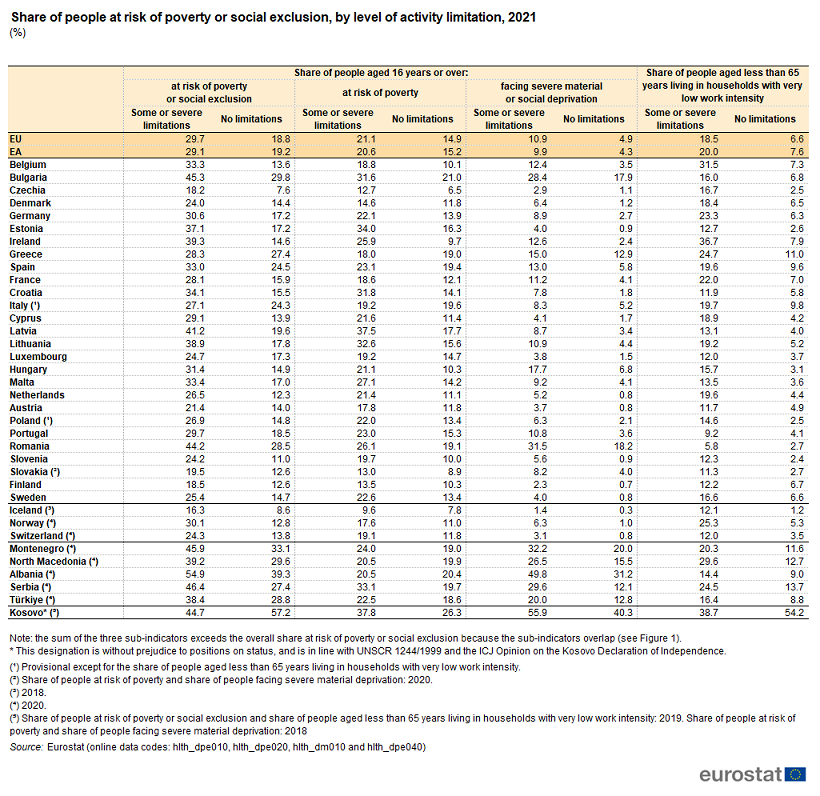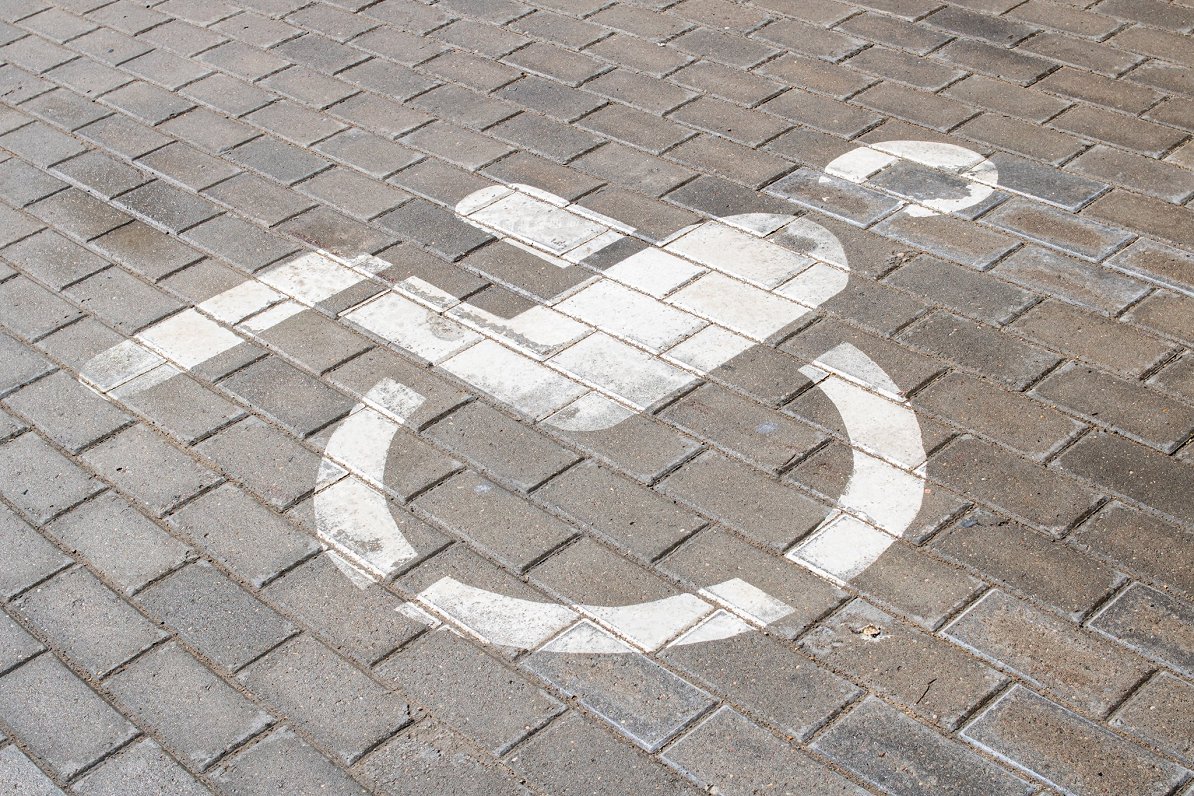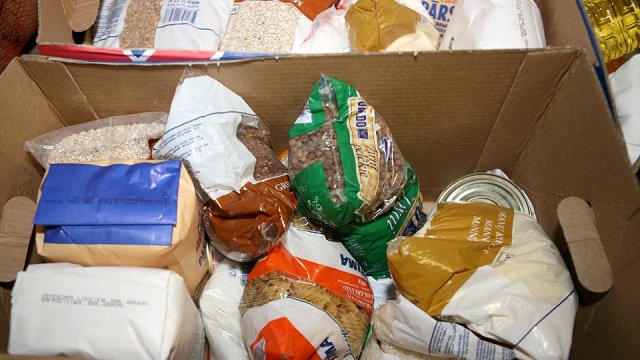The European statistic agency's at risk of poverty or social exclusion indicator measures the percentage of people who are at risk of poverty and/or severely materially and socially deprived and/or living in a household with a very low work intensity.
In 2021, 29.7 % of the EU population aged 16 years or over with a disability (activity limitation) was at risk of poverty or social exclusion, compared with 18.8 % of those with no disability. For Latvia the difference was much wider with equivalent figures 41.2 % for people with a disability and 19.6 % for those without. Only Bulgaria and Romania had higher percentages (see table below).

The share of people with a disability (some or severe activity limitation) who were at risk of poverty or social exclusion in 2021 ranged among the EU Member States from 18.2 % in Czechia and 18.5 % in Finland to 44.2 % in Romania and 45.3 % in Bulgaria. As such, the share was 2.5 times as high in Bulgaria as in Czechia.
The at-risk-of-poverty rate among people aged 16 years or over with a disability (activity limitation) was highest in 2021 in the Baltic States: 37.5 % in Latvia, 34.0 % in Estonia and 32.6 % in Lithuania. The lowest rates among people with a disability were in Finland (13.5 %), Slovakia (13.0 %; 2020 data) and Czechia (12.7 %). As such, the rate was 3.0 times as high in Latvia as in Czechia.



























